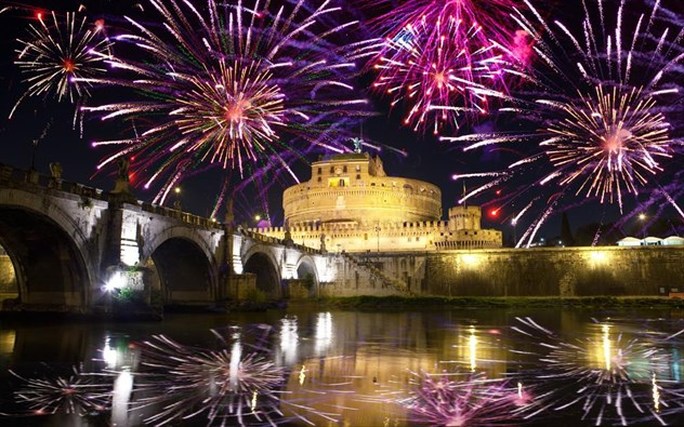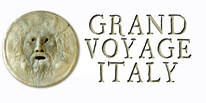|
The wonderful world of traditional Italian fireworks! Written by Marcel Hanse & Leendert van Buren Italian fireworks are very special and well known for two main reasons: their exemplary quality and the intensity of their colors. Around 1292, when Marco Polo was alive and actively trading European goods for Eastern merchandise, he brought back with him a mysterious black powder. This powder could somehow miraculously explode when ignited, so (as you might expect) it was immediately put to military use throughout Europe. The Italians, however, found a much more creative use for this extraordinary powder and created the first European fireworks with it. During Europe’s Renaissance (approximately 1400–1500 AD), the Italians further improved and developed their fireworks and turned chemical explosions into a consummate art form. First of all, New Year's Eve is called Capodanno in Italy... and Fireworks are called Fuochi d'Artificio... In 1830, advances in science and a much better understanding of chemistry in southern Italy made it possible to create flammable powders that would burn in different colors. For the first time, fireworks could be red, green, blue or even yellow! Ongoing research during the 19th century by both the Italians and Germans made newer and more vibrant colors possible, and it has continued ever since. During the last decade, pyrotechnic chemists have even gone one step further: they have managed to make pyrotechnic chemical reacts so they explode in colors as unusual as magenta, orange, aquamarine, lemon-yellow and even turquoise! As for the shells that deliver these chemical wonders: In Italy the cylindrical shell is the most popular. (The Chinese and Japanese prefer spherical shells). Unlike spherical shells, however, cylindrical shells don’t have to be categorized as multi–break shells, even though they may contain a single-effect, like a willow, peony or a peony with reports. Reports and salutes play a very important role in Italian culture–particularly during their religious festivals. Unlike may other parts of the world, daylight shows are very popular there, and they are filled with single-effect and/or multi-break shells. Color, of course, plays a much more important role during the evening displays; whereas the daylight displays are all about rhythm, and those rhythms are created using a variety of salutes, reports and colored smoke shells. Italian shows generally contains three parts: the opening (apertura), the show itself (with the “fermata” shells), and a pré–final (the “giapponesata”) with the final happening immediately afterwards. Timing is critical for both the evening and daylight displays. The final is somewhat comparable to the way a train starts off slowly but increasingly gains speed, power and intensity. As you might expect, most of the major competitions and displays are fired during religious feasts and festivals to honor local saints who protect the villages, towns and people living in each city. Generally, most of the larger competitions and festivals take place in southern Italy. Some locations and dates of some of the bigger festivals:
During these fireworks competitions and religious festivals, several different companies (sometimes six or more) compete in the daylight festivities and then again during the evening competitions. If you want to see large multi-break shells and admire professionalism and exquisite artistic technique–southern Italy is the place to see it! Of course, there are a myriad of other magnificent shells (particularly characteristic of Italy’s pyrotechnic arts) displayed here as well. The Real Deal on Italian Fireworks by Jerry Finzi The video below is about Molfetta, where my father was born. This illustrates the typical News Year's Eve in Italy... local ordinances tend to ban fireworks but people buy them anyway and set them off on the streets of their towns--not on their own properties in rural areas (like here in the U.S.), but right on the streets of big and small cities alike. It's mayhem and chaos with explosions everywhere. Check out the video of Naples above and notice that the fireworks are going off everywhere--not in one organized, permitted location. I'm sure if you could look at the whole of Italy from space at midnight on December 31st, you'd see pulsing lights going off all over The Boot. Over the past four years, illegal fireworks have resulted in four deaths and 1,950 injured. Last year, 561 were injured, including 76 children under 12 years of age. The animal rights groups claim that each year about 5,000 deaths of animals are caused by stress or accidents arising from fireworks. As is typical for Italy, the laws vary from town to town and region to region. In general, no one under 18 can buy fireworks. They also are not allowed to be set off in public spaces, but it's obvious that the police are lax in their enforcement of the laws. So, if you are in Italy this Capodanno (literally, the Head of the Year), be careful. Fireworks will start going off all over the city or village you are in... and we're not just talking about a few small firecrackers, either. I've seen videos of the type of rockets meant to go skyward shooting across a large piazza at ground level into a crowd! Stay safe and Felice Anno Nuovo! --Jerry Finzi
If you enjoyed this article, please SHARE it and LIKE it on your favorite social media site. We also have pages on: Google+ StumbleUpon
0 Comments
Your comment will be posted after it is approved.
Leave a Reply. |
Categories
All
Archive
June 2024
|



 RSS Feed
RSS Feed
